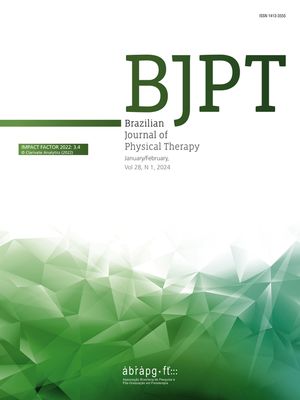
1st STUDENT SCIENTIFIC CONFERENCE OF THE BRAZILIAN ASSOCIATION FOR RESEARCH AND POSTGRADUATE IN PHYSIOTHERAPY (ABRAPG-FT)
More infoThe traditional front plank (TFP) promotes increased core muscle strength and endurance, promoting greater body stability and greater individual capacity to maintain the exercise for as long as possible. The time to perform an exercise and the weekly volume of physical activity (PA) may be related, but the nature of the relationship will depend on factors such as type of exercise, intensity, frequency, motivation and verbal reinforcement. It is known that physical performance in trained individuals is greater, suggesting that they have more experience and, consequently, greater motivation and mental conditioning compared to untrained individuals.
ObjectivesTo verify whether the execution time of the plank is influenced by the volume of moderate and vigorous PA (MVPA).
MethodsCross-sectional experimental study. Healthy adults of both genders were included, with practice of moderate PA of at least 150 minutes a week and/or vigorous PA of at least 75 minutes a week (International Physical Activity Questionnaire - IPAQ), without reports of pain or history of injury or trauma, with previous experience in the TFP exercise, and not having performed physical exercise in the last 48 hours. After reading and accepting the Free and Informed Consent Term, the evaluation form and the IPAQ were completed. The execution order between the test with verbal reinforcement (WVR) and without verbal reinforcement (WoutVR) was defined by simple draw. Participants should remain for as long as possible in the TFP position, with elbows and feet resting on the ground in line with the shoulders, hips and spine in a neutral position and posterior pelvic inclination. The words of encouragement were standardized, “let's go, contract and maintain”, associated with the participant's name and repeated firmly in an uninterrupted sequence. The evaluator monitored the vertical displacement of the participant's hip during the planks. Fatigue time was defined when vertical displacement of the hip exceeded 10 centimeters. The maximum execution time was defined at the moment of contact with the knees on the ground. Between runs, participants rested for 30 minutes. The relationships between fatigue time and maximum time with the weekly volume of MVPA were evaluated using Spearman's correlation. All analyzes considered a significance level of 5%.
Results10 individuals were evaluated, five men and five women, with a mean age of 27.1 (±7.6) years, and mean body mass index of 23.4 kg/m² (±4.2). The analysis showed a strong and positive relationship between time of fatigue while performing TFP WoutVR and weekly MVPA volume (rho=0.640), and a strong and positive relationship between performing TFP WVR and weekly MVPA volume (rho= 0.652).
ConclusionThe findings of this study indicate that the greater the volume of MVPA, the greater the time to reach fatigue during the execution of the plank WVR and WoutVR.
ImplicationsThe limitations are related to the sample size
Conflict of interest: The authors declare no conflict of interest.
Acknowledgments: We would like to thank the Fundação de Amparo à Pesquisa e Inovação do Estado de Santa Catarina – FAPESC (2021TR995) for supporting this research.
Ethics committee approval: Approved by CEPSH/UDESC (CAAE: 51097321.1.0000.0118).





